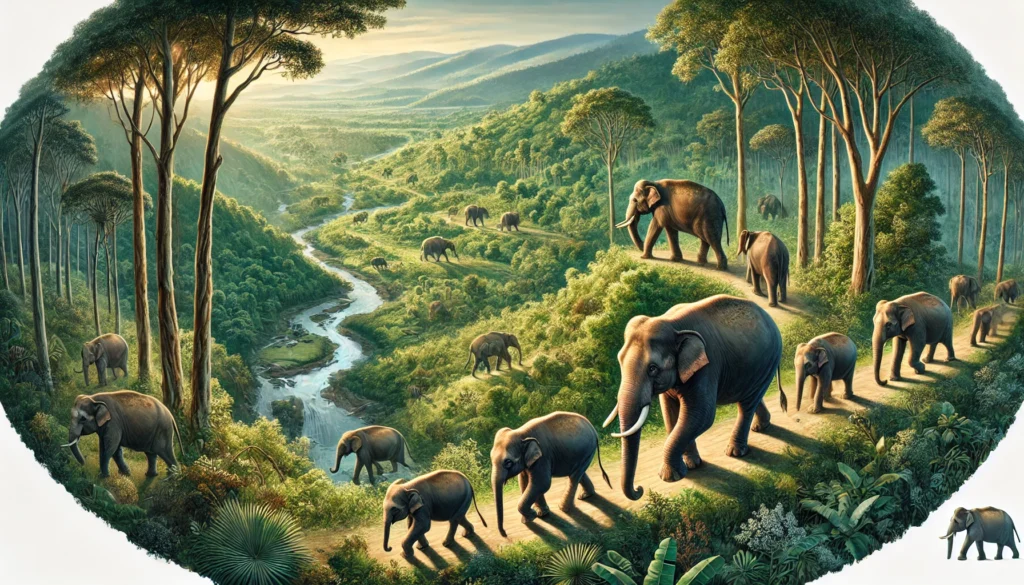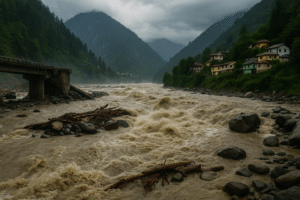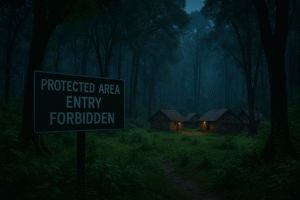In the bustling cities and expanding farmlands of India, it’s easy to forget about the wild spaces and the creatures that call them home. But our forests, mountains, and rivers are vital for biodiversity. Enter wildlife corridors—nature’s bridges that connect fragmented habitats, helping animals move freely and thrive.
Wildlife corridors are crucial for maintaining ecological balance. With urbanization and infrastructure development, many natural habitats have been divided, creating isolated pockets of wildlife. This fragmentation can lead to genetic isolation, reduced access to resources, and increased human-wildlife conflict. By bridging these fragmented habitats, wildlife corridors provide a safe passage for animals, ensuring they can migrate, find mates, and access diverse resources.
The Significance of Wildlife Corridors
Wildlife corridors are like lifelines for our forests and their inhabitants. Imagine living in a city where all roads to neighboring towns are blocked. You’d be stuck, unable to visit friends, find work, or even get food. Animals face similar challenges when their habitats are fragmented by roads, railways, and farms. Wildlife corridors are essential because they:
Facilitate Gene Flow: When animals from different populations can intermingle, it reduces inbreeding and enhances genetic diversity.
Enhance Access to Resources: Different seasons require different resources. Wildlife corridors allow animals to migrate to areas where they can find food, water, and shelter.
Reduce Human-Wildlife Conflicts: By providing designated paths for animals, wildlife corridors can reduce the likelihood of animals straying into human settlements.
Support Ecosystem Services: Healthy animal populations contribute to ecosystem services like pollination, seed dispersal, and maintaining the balance of prey and predator populations.

Case Studies in India
India has several successful wildlife corridors that have made a significant impact on biodiversity conservation. Let’s explore a few:
The Terai Arc Landscape
Stretching across the Indian states of Uttarakhand, Uttar Pradesh, and Bihar, the Terai Arc Landscape (TAL) is home to tigers, elephants, and rhinos. This corridor connects 14 protected areas, allowing these majestic creatures to roam freely across a vast landscape.
The Eastern Ghats Corridor
This corridor links the forests of Andhra Pradesh with Tamil Nadu, enabling species like the Indian elephant and Bengal tiger to migrate between habitats. The corridor also supports many endemic species, maintaining the region’s rich biodiversity.
The Kanha-Pench Corridor
Connecting the Kanha and Pench tiger reserves in Madhya Pradesh, this corridor is vital for the survival of the tiger population. It ensures genetic exchange between tiger populations and provides them with ample space to hunt and breed.
Challenges in Creating and Maintaining Wildlife Corridors
Creating and maintaining wildlife corridors in India is not without its challenges. Some of the main obstacles include:
Human Encroachment
As human populations grow, encroachment into forest areas becomes inevitable. This leads to habitat destruction and fragmentation.
Infrastructure Development
Roads, railways, and dams often cut through wildlife habitats. While development is essential, it can severely impact wildlife movement if not planned carefully.
Poaching and Illegal Activities
Wildlife corridors can sometimes become hotspots for poaching and illegal trade. Ensuring the safety of animals in these corridors is crucial.
Climate Change
Shifting climate patterns can change the availability and location of resources such as water and food, complicating the reliance of animals on their customary migration paths.
Community Involvement: A Key to Success
The success of wildlife corridors largely depends on community involvement. Educating local communities about the importance of these corridors and involving them in conservation efforts can lead to more sustainable outcomes. For instance, the efforts in the Nilgiri Biosphere Reserve, where local tribes actively participate in monitoring wildlife and preventing illegal activities, have shown remarkable results.
The Role of Technology in Wildlife Conservation
Technology plays a crucial role in modern wildlife conservation. From GPS collars and camera traps to drones and satellite imagery, these tools help scientists and conservationists monitor animal movements, identify critical habitats, and assess the effectiveness of wildlife corridors. For instance, the Wildlife Institute of India (WII) uses advanced technologies to track the movement of tigers and elephants, providing valuable data to improve corridor management.
Steps to Improve Wildlife Corridors in India
To ensure the success of wildlife corridors in India, several steps can be taken:
Integrated Planning: Infrastructure development projects should include wildlife corridors in their planning stages. Environmental impact assessments should prioritize the creation of corridors.
Restoration of Degraded Habitats: Efforts should be made to restore degraded habitats to improve connectivity.
Legal Protection: Wildlife corridors should be legally protected to prevent encroachment and ensure safe passage for animals.
Public Awareness: Educating the public about the significance of wildlife corridors can help build support for conservation initiatives.
Collaboration: Collaboration between government agencies, NGOs, local communities, and the private sector is essential for the successful implementation and maintenance of wildlife corridors.
Conclusion
Wildlife corridors are vital for preserving India’s rich biodiversity. By bridging fragmented habitats, they ensure the survival of many species and maintain ecological balance. It’s essential for all stakeholders, including the government, communities, and individuals, to work together to protect these natural highways. After all, the future of our wildlife depends on the steps we take today.
Author’s Note
Thank you for reading about the importance of wildlife corridors. As a passionate advocate for conservation, I believe that protecting these natural pathways is crucial for maintaining our rich biodiversity. Your support and awareness can make a significant difference in preserving our natural heritage.
G.C., Ecosociosphere contributor.




